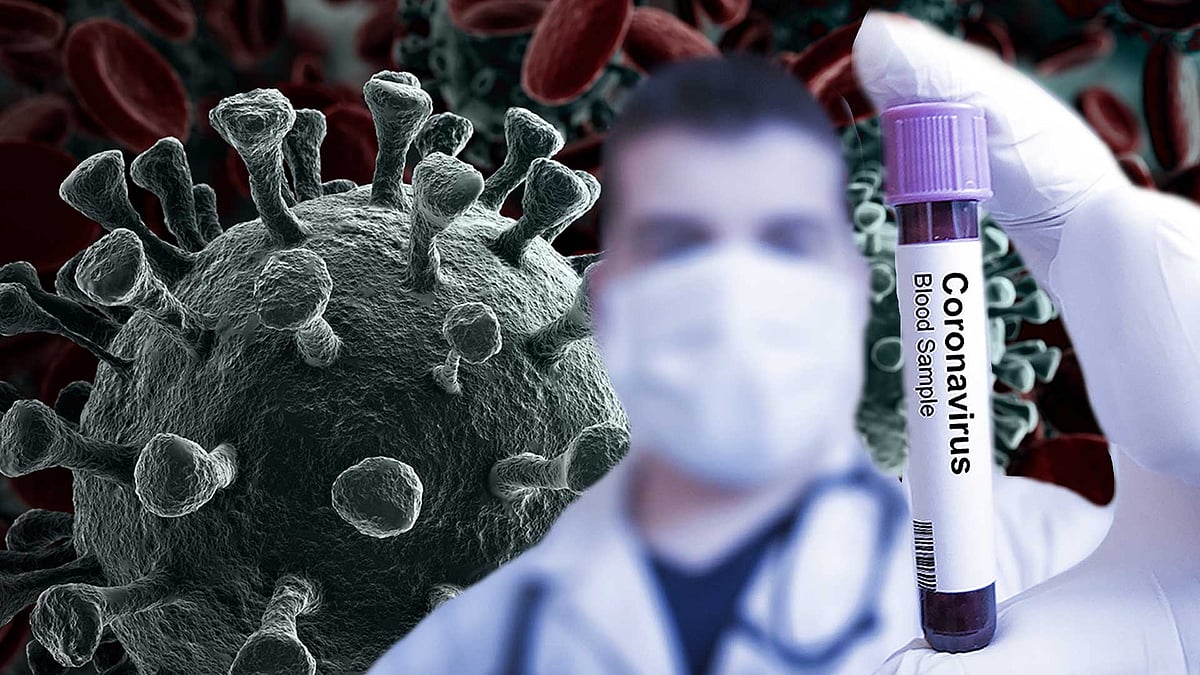Spanish flu: How information policing and nationalist propaganda worsened a pandemic a century ago
History tells us that press freedom and alarm are non-negotiable in times of a pandemic.
One day in April 1917, American president Woodrow Wilson invited Frank Cobb for an early morning meeting at the White House. Cobb wrote editorials for the New York World, then one of the major newspapers in the United States, and was a friend of Wilson.
The US was preparing to enter the First World War which had been raging in Europe since 1914. The reason was the unrelenting attacks on American merchant vessels by German submarines. In fact, hours after meeting Cobb, Wilson was to ask Congress to declare war on Germany and "make the world safe for democracy". This was an ironic turn for Wilson, whose campaign for the second term had marketed him as the man who kept the US out of the war.
The president told Cobb he had no choice but to enter the war. “He said he couldn't see any alternative, that he had tried every way he knew to avoid war,” Cobb would recollect later. “I told him his hand had been forced by Germany, that so far as I could see we couldn't keep out.”
But the world outside the White House, swept by war, was just months away from a deadly pandemic. In early 1918, as Congress was debating Wilson’s wartime laws to curb dissent and press freedoms, influenza broke out in a county in Kansas. On March 4, the first report of a soldier getting the flu came. In two weeks, 1,100 soldiers were inflected, and 38 had died.
Americans, strangers to the malady, thought they were coming down with pneumonia. Here’s an extract from a report in the Santa Fe Monitor, a local newspaper, at the time: “Mrs Eva Van Alstine is sick with pneumonia...Ralph Lindeman is still quite sick...Homer Moody has been reported quite sick...Pete Hesser’s three children have pneumonia...Mertin, the young son of Ernest Elliot, is sick with pneumonia...Most everybody over the country is having lagrippe or pneumonia.”

Washington DC, however, didn’t take the outbreak seriously. The illness, which would ultimately kill more Americans than the war, would be downplayed because of Wilson’s attempts at controlling and manipulating information during the war.
The First World War was one of the bloodiest conflicts in human history. It broke out in 1914, sucking in major European powers, and by the time it ended four years later, over 20 million people lay dead, including nearly 1,15,000 American soldiers.
The flu would prove deadlier, leaving between 50 to 100 million people dead across the world and visiting untold suffering upon a vast section of the global population.
Sedition and espionage
At the White House, President Wilson unequivocally told Cobb that for as long as the war prevailed, civil freedoms in the country must shrink. Wilson did not resort to euphemisms. He said the US constitution would not survive the war and that “free speech and the right of assembly would go”.
Accordingly, between 1917 and 1918, Wilson wielded the sticks of censorship and propaganda to punish those who sought to bring the country, the constitution and the flag into “contempt, scorn, contumely, or disrepute”. By May 1918, his administration had passed two draconian laws to this end — the Espionage Act and the Sedition Act.
The Espionage Act, passed in June 1917, made dissent against American participation in the war illegal. Anyone deemed to be rallying against the war efforts or being “useful” to the nation’s enemies was declared criminal. In the most egregious stretch, postmasters were authorised to read letters and report them if they found anything suspicious.
When a section on “press censorship” in the Espionage Act was struck down in Congress, Wilson’s administration gave a push to the Sedition Act, which was passed in May 1918. The law lived upto its name. It made it unlawful to “utter, print, write or publish any disloyal, profane, scurrilous, or abusive language about the government of the United States”.
Newspapers and periodicals, especially those run by anti-war activists and socialists, came under heavy fire. The most infamous prosecution from this era was that of Charles Schenck, general secretary of the US Socialist Party who opposed forced conscription. He was sentenced to six months in jail for violating the Espionage Act.
The legal scholar Stephen Kohn claims that about 2,000 cases were filed under the Espionage Act and the Sedition Act.
‘The world’s greatest adventure in advertising’
In April 1917, the government brought together a notorious ensemble for wartime propaganda and censorship – the Committee of Public Information, or CPI. Headed by George Creel, a journalist who did not enjoy much affection within his profession, the body was not just tasked with blasting well-tailored pro-war propaganda for public consumption, but also for pioneering vigilantism in the realm of information.


Creel would later call his job “the world’s greatest adventure in advertising”.
“In the brief year and a half of its existence, the CPI’s News Division set out to shape the coverage of the war in US newspapers and magazines,” wrote Christopher Daly, professor of journalism at Boston University. According to Daly, the CPI shaped the discourse through networks, since most journalists had the bulk of their contact with the CPI through its News Division.
The formula worked as patriotic fervor seeped heavily into print. In The People’s History of the United States, Howard Zinn quotes a New York Times editorial from the summer of 1917: “It is the duty of every good citizen to communicate to proper authorities any evidence of sedition that comes to his notice.” Another in the Literary Digest told readers “to clip and send to us any editorial utterances they encounter which seem to them seditious or treasonable”.
Shrinking freedoms, expanding pandemic
Patriotic frenzy and conformism in the society and the press were the visible effects of Wilson’s propaganda and laws. But there was a deadlier invisible effect: the dilution of the danger that the Spanish flu posed to public health – all in the name of wartime morale.
Historian John M Barry made this point at length in The Great Influenza. A particular historical event he analysed for this is a celebration parade that took place in Philadelphia in September 1918.
The first wave of Spanish flu had left the US by July that year but a second, and more disastrous, wave arrived in late August. It hit soldier barracks near Boston and, on the worst day, more than 1,500 new cases were reported. The medical infrastructure was so overwhelmed that infected recruits, blue with influenza, were not admitted. Many died in their small barracks.
The end of the First World War was also on the horizon. To celebrate America’s impending victory, 2,00,000 people were to pour into the streets of Philadelphia. The event was planned for weeks. With the flu claiming lives of soldiers and civilians, physicians and public health experts urged William Krusen, then director of the Philadelphia Department of Public Health and Charities, to call off the parade.
Krusen, a political appointee, did not heed the warnings. Barry writes that he “feared that taking any such steps might cause panic and interfere with the war effort. Keeping the public calm was their goal”.
Barry goes on: “None of the anxiety of the moment was reported in any of the city's five daily papers, and if any reporter questioned either Krusen or the Board of Health about the wisdom of the parade's proceeding, no mention of it appeared in print.”
When Howard Anders, a prominent public health expert, told Philadelphia’s papers that the parade would be “a ready-made inflammable mass for a conflagration,” the newspapers refused to publish his warnings.
The parade was held with much fanfare in Philadelphia. About 45,000 were reported to be infected within the next week, and 12,000 died over the next six weeks.


Like on every other matter, reporting on the Spanish flu in late 1918 was dictated by Wilsonian directives. The public were to be served good, righteous and morale-boosting information, but not the truthful one. Newspaper reports on the flu were dominated by half-truths, lies and distortions. Public health officials also lied about the influenza, never acknowledging its danger.
When a newspaper called Jefferson County Union in Wisconsin reported factually about the flu, a general in the “Army Morale Branch” declared that the report was “depressant to morale”. The paper’s editor faced criminal prosecution under the Sedition Act.
“As terrifying as the disease was, the press made it more so,” argues Barry. “They terrified by making little of it, for what officials and the press said bore no relationship to what people saw and touched and smelled and endured.”
The Spanish flu killed about 43,000 American soldiers, a few thousand less than the war itself. Overall, the flu infected 28 percent of all Americans, killing 6,75,000 of them.
Lessons for today
In an article in The Atlantic this week, journalist Anne Applebaum argued that “throughout history, pandemics have led to an expansion of the power of the state.” These expansions can not only boost the state’s will for surveillance, but also control movement of citizens and curtail press freedoms.

Most importantly, the state can control information and sell stories that are at once compelling, distorted and even harmful. In India, a great deal of media already helps the state in this area.
Modern citizens, who barter a part of their freedoms in exchange for security from the state, might feel persuaded to let this pass. But as Wilson’s example from 100 years ago demonstrates, there’s more than just a catch here.
If the pandemic makes the state’s expanding powers inversely proportional to press freedoms, the outcome might be identical to Wilson’s US in 1918.
The media must remain sceptical of every government claim that appears to cloak danger with assurance. It should also fight the impulse of shining light on so-called positive stories, especially when numbers climb everyday, and projections indicate worse. The trail coronavirus leaves behind is hideous, and the media should say so. As Barry writes about Spanish flu in the US, “the media and public officials helped create that terror — not by exaggerating the disease but by minimizing it, by trying to reassure.”
Questions on public health should not be obfuscated by nationalist or ideological piffle that baits foreigners or minorities. Pseudoscience should be monitored and called out. This is the bare minimums that the Indian media can do.
Fortunately, there are healthy signs. Prime Minister Narendra Modi, whose party employs Amit Malviya, has now asked the electronic media to fight misinformation. He also said that TV news channels should broadcast scientific reports.
Indians in any case do not repose much trust in the media this time around. But an opportunity to change this for the better is before us. Let’s not waste it.
 India’s healthcare is not equipped for a COVID-19 pandemic, and we can’t clap that away
India’s healthcare is not equipped for a COVID-19 pandemic, and we can’t clap that away
 Coronavirus is coming for you. Act now
Coronavirus is coming for you. Act now